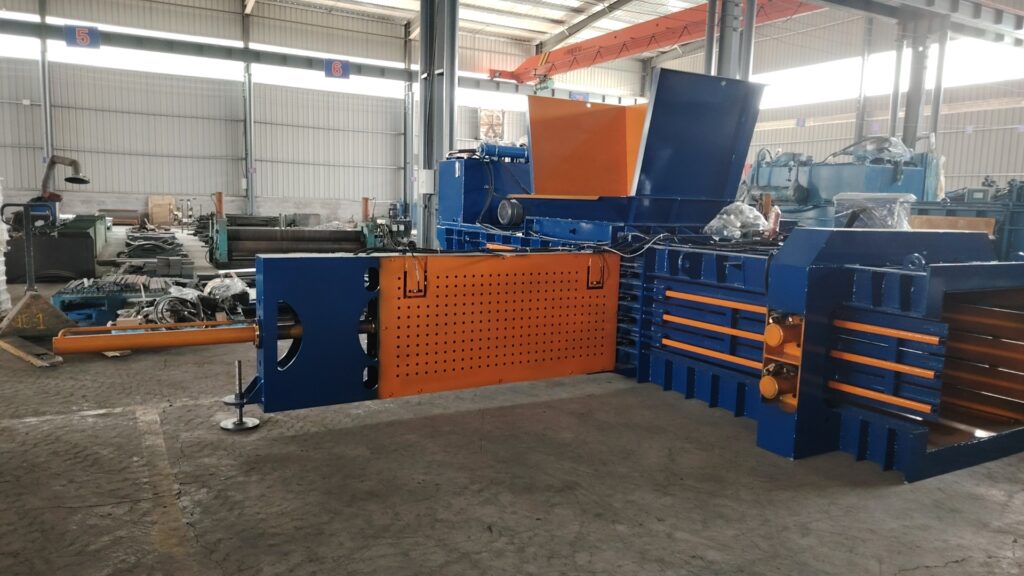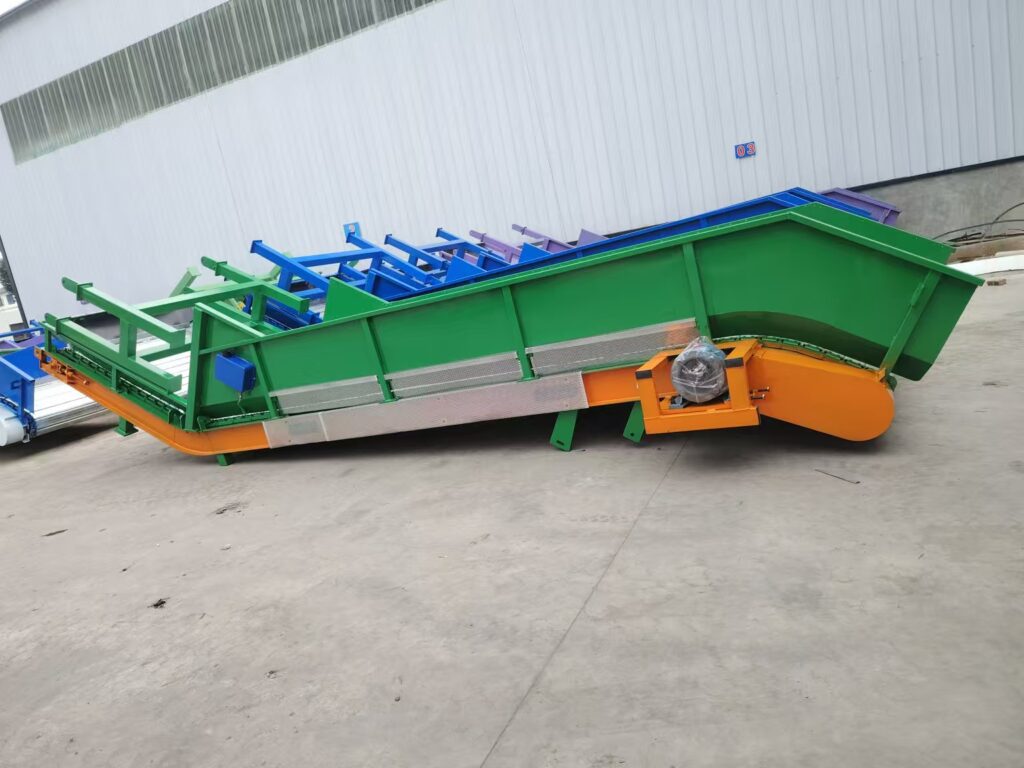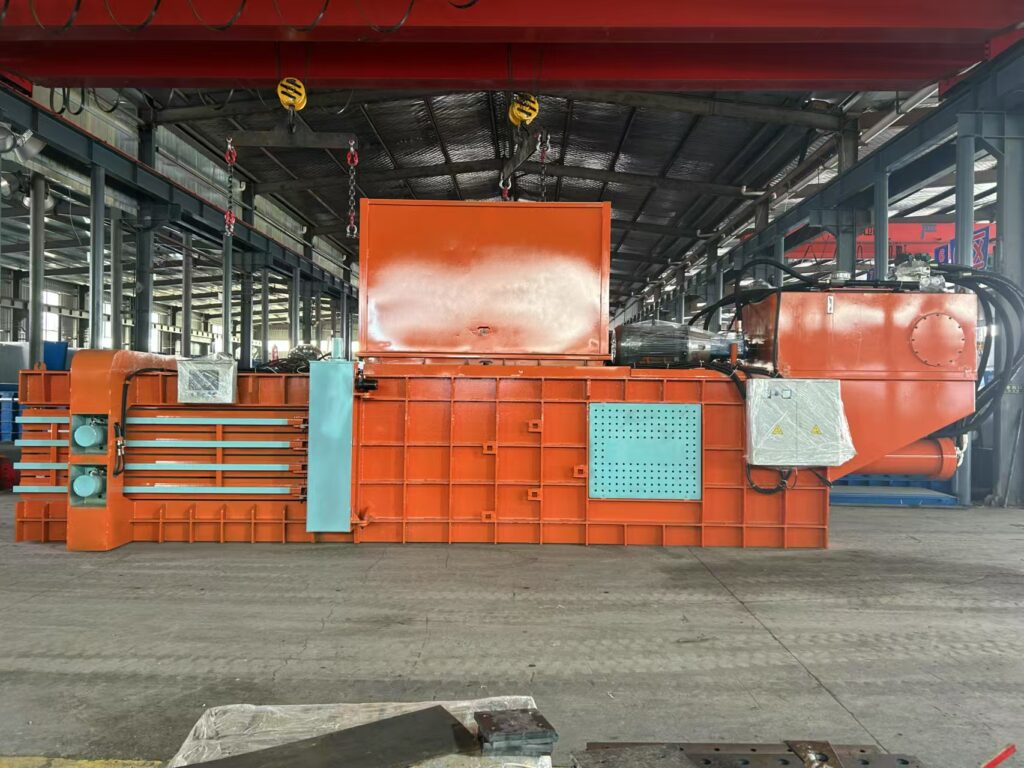Introduction To Horizontal Baler Machines
Waste management has become a critical challenge for modern industries, recycling facilities, and logistics companies. Businesses generate tons of waste materials daily, from cardboard and plastics to textiles and metals. Managing these materials efficiently requires reliable equipment, and one of the most effective solutions is the horizontal baler machine.
What Is A Horizontal Baler Machine?

A horizontal baler machine is an industrial waste compactor designed to compress recyclable materials into dense, manageable bales. Unlike vertical balers, which compact materials from top to bottom, horizontal balers compress materials from the side.
Key Components Of A Horizontal Baler
-
Feeding System: Accepts waste materials manually or via conveyor.
-
Compression Chamber: The hydraulic press compresses materials horizontally.
-
Hydraulic Cylinder: Provides the pressure needed to compact waste.
-
Binding System: Wires or straps tie the bales securely.
-
Discharge System: Pushes completed bales out for storage or transport.
Why Choose A Horizontal Baler Machine?

Increased Efficiency
Horizontal balers process larger volumes of waste compared to vertical balers. They are designed for continuous feeding, which reduces downtime and improves productivity.
Space Optimization
By compressing bulky waste into compact bales, businesses save valuable storage space and reduce clutter in warehouses or recycling centers.
Cost Reduction
Transporting loose waste is expensive. Compact bales lower transportation costs by maximizing payload efficiency in trucks or containers.
Environmental Benefits
Using a horizontal baler reduces landfill use and encourages recycling. By turning waste into uniform bales, businesses support sustainable resource recovery.
Versatility Of Materials
These machines handle a wide range of waste, including:
-
Cardboard
-
Waste paper
-
Plastic bottles and films
-
Textiles
-
Aluminum cans
-
Scrap metals
Types Of Horizontal Baler Machines
Semi-Automatic Horizontal Baler
-
Requires manual tying of bales.
-
Suitable for medium-sized businesses.
-
Cost-effective solution.
Fully Automatic Horizontal Baler
-
Features an automatic feeding, compressing, and tying system.
-
Ideal for large-scale recycling plants and logistics hubs.
-
Handles continuous and high-volume waste processing.
Closed-End Horizontal Baler
-
Has a closed-end chamber design.
-
Produces higher bale density.
-
Used for materials that require strong compaction.
Open-End Horizontal Baler
-
Features an open chamber with continuous bale extrusion.
-
Suitable for high-output production lines.
-
Saves labor time with automated binding.
How To Use A Horizontal Baler Machine

Step 1: Feeding Materials
Load waste into the baler either manually or through a conveyor. The feeding system ensures a steady material flow into the compression chamber.
Step 2: Compressing Waste
The hydraulic cylinder pushes waste horizontally against the chamber wall, compacting it into a dense block.
Step 3: Binding The Bale
Depending on the model, bales are tied manually or automatically with wires, plastic straps, or other binding materials.
Step 4: Ejecting The Bale
Once binding is complete, the finished bale is ejected from the machine. This process may be manual or fully automated.
Step 5: Transporting And Storing
The compact bales are easy to stack, transport, and deliver to recycling facilities or buyers.
Safety Tips For Operating A Horizontal Baler
-
Always wear protective equipment such as gloves and safety glasses.
-
Never place hands or objects inside the compression chamber.
-
Follow lockout procedures before performing maintenance.
-
Train all operators thoroughly on correct usage and emergency protocols.
-
Keep the machine clean and perform regular inspections.
Benefits Of Horizontal Baler Machines
Improved Waste Management
They provide a systematic approach to recycling, minimizing waste accumulation and supporting environmental compliance.
Labor Savings
Automatic models reduce manual intervention, allowing staff to focus on other tasks.
Revenue Generation
Compressed bales have resale value. Recycling companies and manufacturers often purchase baled materials at higher prices.
Compliance With Regulations
Many countries enforce strict recycling laws. Using a horizontal baler helps businesses meet environmental requirements.
Choosing The Right Horizontal Baler Machine
When selecting a horizontal baler, consider the following factors:
-
Material Type: Cardboard, plastic, textiles, or metals.
-
Processing Volume: Daily or monthly waste output.
-
Available Space: Machine size and installation requirements.
-
Automation Level: Semi-automatic or fully automatic.
-
Budget: Balancing investment with operational benefits.
Applications Of Horizontal Baler Machines
Recycling Plants
Recycling centers use balers to process materials for recycling and resale.
Warehouses And Logistics
Large distribution centers use balers to efficiently manage packaging waste.
Printing And Paper Mills
Balers compress excess paper, newspapers, and cardboard for recycling.
Manufacturing Industries
Factories use balers to handle production scrap, including plastics and metals.
Retail And Supermarkets
Maintenance And Care Of Horizontal Baler Machines
-
Regular Inspection: Check hydraulic systems, cylinders, and wiring.
-
Lubrication: Keep moving parts lubricated for smooth operation.
-
Cleaning: Remove debris from the feeding chamber and conveyor.
-
Hydraulic Fluid Check: Maintain proper fluid levels for pressure efficiency.
-
Professional Servicing: Schedule routine maintenance by certified technicians.
Future Trends In Horizontal Baler Technology
Smart Automation
Integration of IoT technology for remote monitoring and predictive maintenance.
Energy Efficiency
Development of energy-saving hydraulic systems to lower electricity consumption.
Improved Bale Density
Next-generation designs will focus on producing even more compact bales.
Environmentally Friendly Designs
Manufacturers are moving toward machines with lower emissions and recyclable components.
Additional Applications Of Horizontal Baler Machines
Agriculture And Farming
Farms generate large volumes of agricultural film, feed bags, and crop residues. A horizontal baler helps compress these materials into dense bales, making them easier to transport and recycle. By using a baler, farmers reduce waste disposal costs and promote eco-friendly practices.
Hospitality And Food Industry
Hotels, restaurants, and catering services produce significant packaging and plastic waste. Installing a horizontal baler allows these businesses to manage waste more efficiently while keeping back-of-house areas clean and organized.
Municipal Waste Management
Local governments and municipal waste facilities often face challenges with large volumes of mixed recyclable materials. Horizontal balers are used in transfer stations and recycling centers to prepare cardboard, paper, and plastics for further processing.
Automotive And Metal Industries
Automotive workshops and factories use horizontal balers to compact aluminum sheets, scrap steel, and used packaging materials. This not only saves space but also generates additional revenue through scrap sales.
Conclusion: Why Horizontal Balers Are Essential
A horizontal baler machine is more than just waste equipment. It is a vital tool for businesses seeking efficiency, cost savings, and sustainability. From reducing storage space to generating additional revenue through recycling, the benefits are undeniable.
By understanding what horizontal balers are, why they matter, and how to use them, businesses can make informed decisions that improve operations and contribute to environmental protection. Whether you manage a warehouse, recycling facility, or manufacturing plant, investing in a horizontal baler machine ensures long-term value and a cleaner future.
